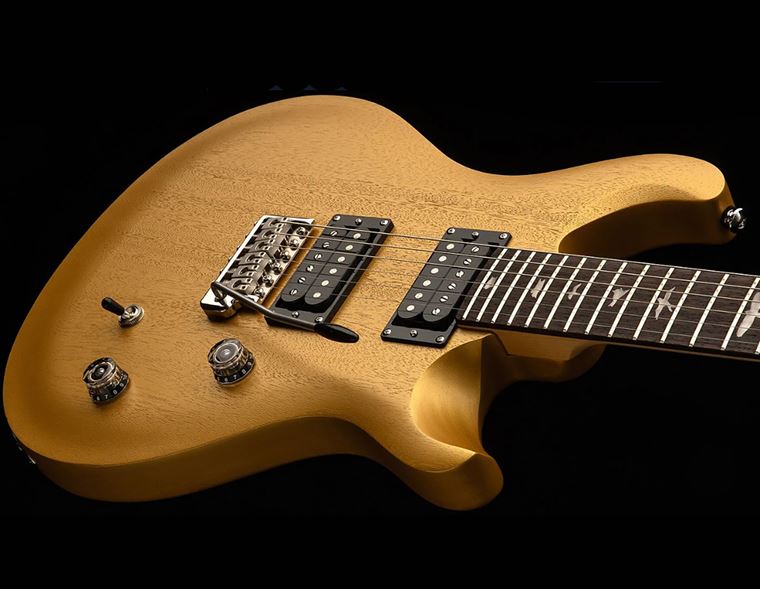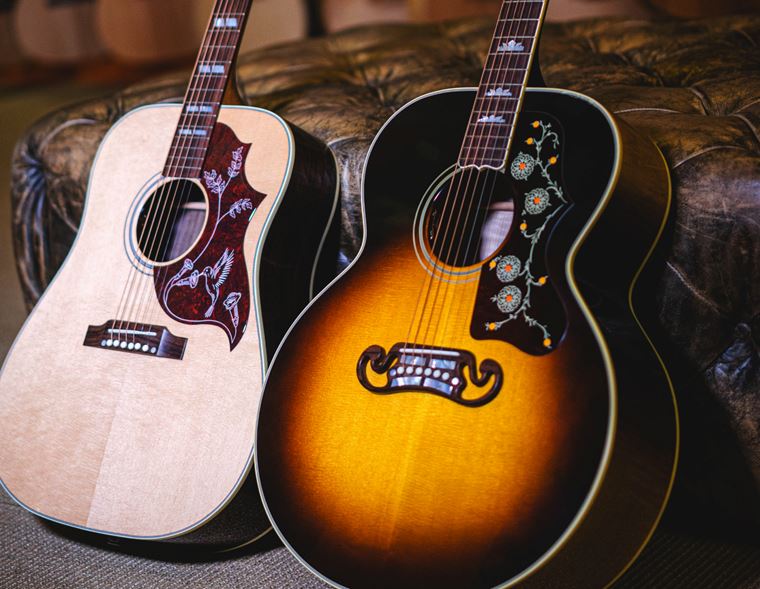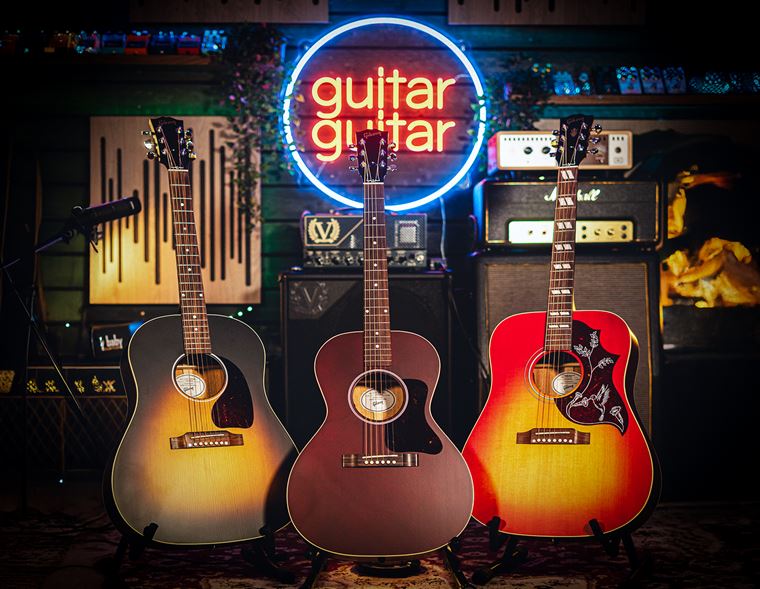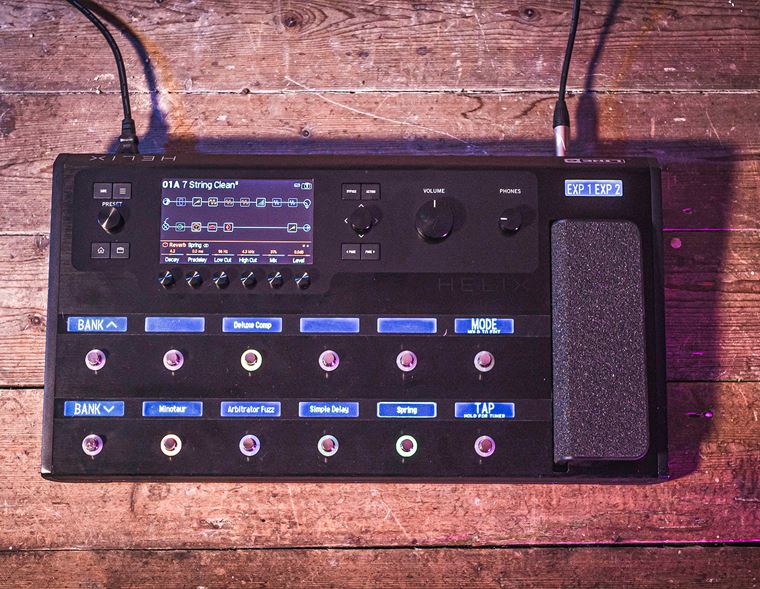Squier vs Fender: What’s the Difference?
Squier and Fender. Two titans of the guitar market, both part of the Fender empire and, superficially at least, both visually similar. Fender branded guitars are more expensive and more highly revered than the more budget-conscious Squier brand, but what are the real differences here? Let’s find out! We’ll briefly mention each brand’s heavily summarised backstory and then discuss the different aspects of both. Join us, why don’t you?
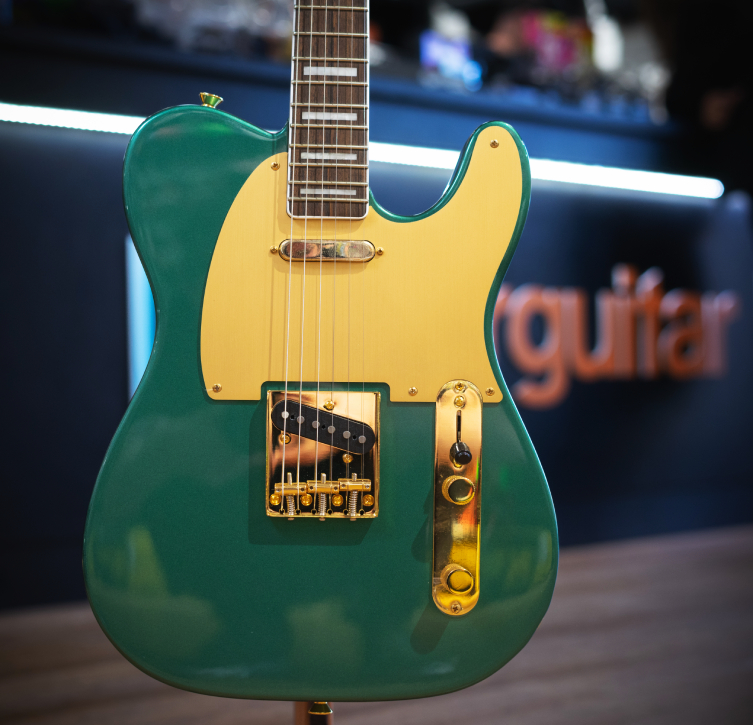
Fender
It’s likely that you’ll already be familiar with this lil’ brand, so let’s keep this intro brief! Fender was the first of three instrument companies created by Californian pioneer Leo Fender (the others being Music Man and G&L). Starting out in 1950, Fender built several of the most successful guitar and bass designs of all time: the Stratocaster, Telecaster and Precision Bass. Leo sold the company in 1965 to TV production company CBS. Quality took a dip until the mid 80s when a consortium of employees bought the company back and raised it to its former greatness. Since then, Fender have continued to be the world’s number one electric guitar company for sales, influence and, arguably, innovation.
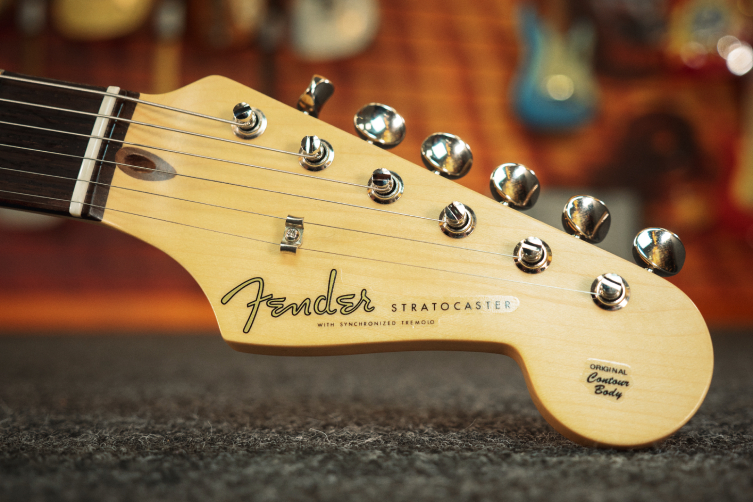
Today’s Fender branded guitar can have originated from either Mexico, Japan or the USA. The Mexican and American models are the most numerous, with Fender Japan’s output being relatively scarce. Fenders made in Mexico are generally the cheapest but are still more expensive than the dearest Squier. Fenders made in California are the most expensive, with the Japanese guitars and basses sitting somewhere in the middle of these two areas.
Squier
Squier actually started out as a premium string brand for violin strings back over a century ago. Fender bought the company in 1965, the same year they themselves were bought over by CBS. Originally attained as a subsidiary for making strings, Fender then chose the Squier brand to be their official overseas replica subbrand in 1982. This was a way of offering a more affordable instrument - with a classic pedigree - to players to help combat the raft of cheap copycat instruments that were flooding the market back then.
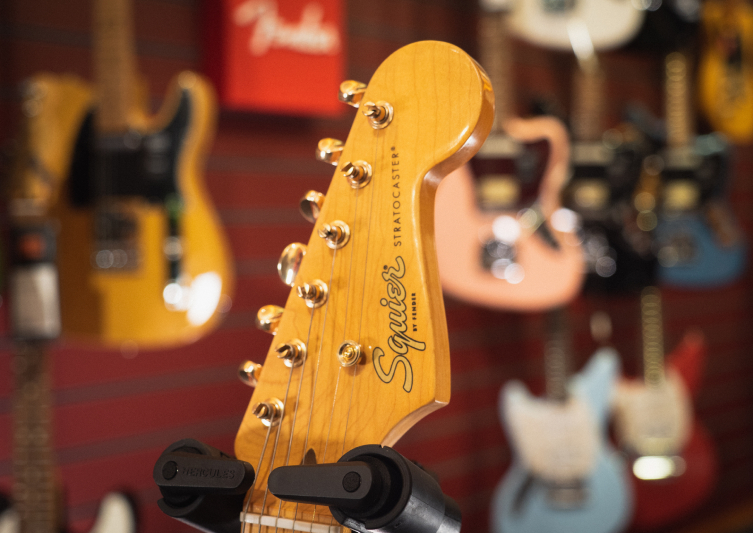
Early Squier guitars are well known these days for their high quality, though it’s maybe fair to say that some parties tend to mythologise these a little. Nevertheless, Squier then became well known as the brand who made the best beginners electric guitar, with the added bonus of being able to use the proper body and headstock shapes used by Fender for extra authenticity. Huge success followed, of course.
The last decade or so has seen Squier’s reputation rise considerably. Increased quality and attention to detail, along with a range of bold guitar designs that blend vintage appointments with unorthodox hardware and colour choices, have resulted in a brand that pretty much dominate the affordable end of the market. No longer looked down upon as humble student guitars, Squier’s more expensive models (still eminently affordable) are being used regularly by gigging players, and even some pro guitarists. The times they are a -changin’!
Fender vs Squier: What’s the Difference?
So, we’ve looked at the basics of each brand. How, then, does each differ? Let’s unpack the magnifying glass…
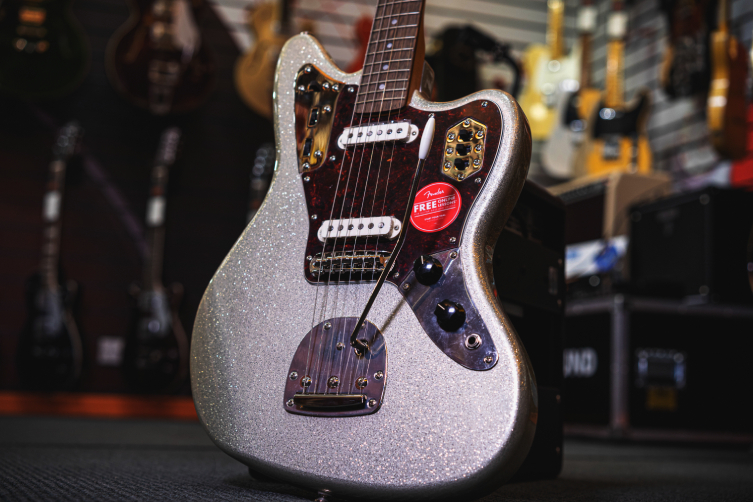
1. Wood
First off, Fender use more expensive wood. Typical Squier bodies can be made from basswood and sometimes pine, whereas Fenders are usually Alder. Now, tonally speaking it’s all subjective, but Alder is a consistently resonant timber that’s also stable. Pine sounds good but is more malleable and therefore not quite as suitable for guitar building, though history does dictate that early Teles were made from this wood.
Basswood is very inexpensive and relatively dense sounding. It is widely used in affordable guitar building, but also with some higher-end brands such as EVH, who use it to counteract the treble loss inherent in their guitar designs (Floyd Rose tremolos add a ton of treble, apparently!). Away from those reasons, basswood is a cheap wood to buy and and it is in plentiful supply.
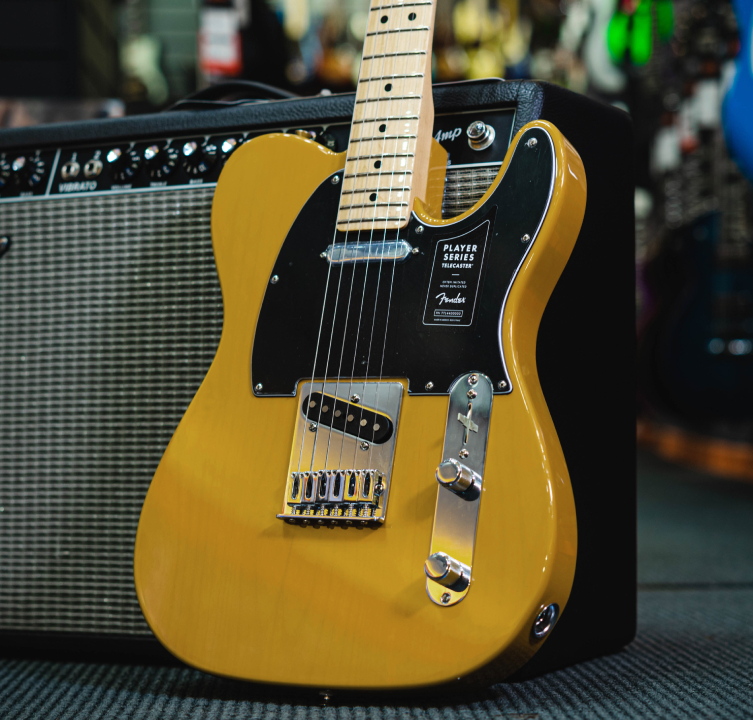
Similar situations apply with fingerboard timbers. Back in the day, everything was either maple or rosewood, but rosewood is far rarer these days and saved for higher-end instruments. Fender often substitute Pau Ferro instead, which is normally a luxury timber. Squier uses cheaper wood like Indian laurel for their fingerboards. Again, it totally does the job and is in plentiful supply, it’s just a less costly wood to buy in.
2. Hardware
Bridges, tuners and electrics are all areas where companies can save big bucks by using cheaper parts. Often, it’s a case of parts like bridges being cast with cheaper, softer metals and alloys rather than being machined with stronger, better stuff. This results in the object having less mass, and less mass means less resonance, sustain and tone for guitarists. Softer metals will wear down and shear quicker, too, so in all ways these types of parts are just inferior and made to a price. Cheap and cheerful, yes, but maybe not for good long-term reliability.
Squier parts are far from the worst offenders but they are markedly cheaper than what is used on Fender guitars. You can tell by the weight, the feel and their somewhat less smooth functionality at times, whether that’s a control knob or a tremolo.

The good news is that these parts can all be upgraded, either straight away or when they begin showing signs of wear or sub-par performance. That said, buying a more expensive instrument normally entails having better hardware already installed, so you could argue that the ‘upgrade’ option will end up costing you the same as a better instrument anyway!
3. Pickups
Pickups are a very important contributor to the sound of any guitar. Excellent quality pickups will deliver width, depth and detail to an instrument, and a good set of pickups is an easy way to make an average guitar ‘shine up’ into a good one. Conversely, poor or even average pickups will kill the vibe of even the most expensive guitar on the planet, since they are the direct communicative link between your fingers and the output signal which goes to your amp and finally your ears. In short, pickups are a significant matter!
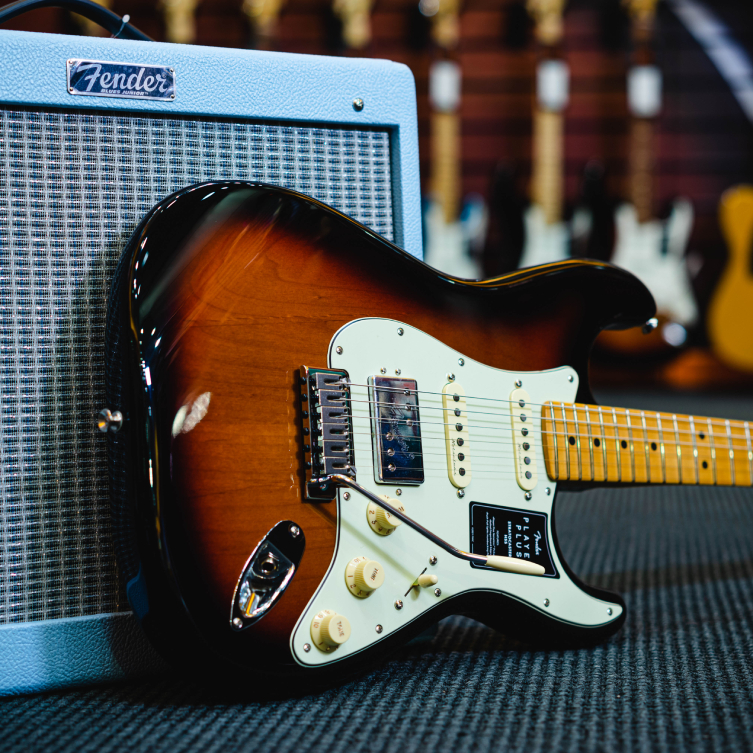
So, Fender use a wide range of pickup models in their guitars. Known for a clear, twangy, jangly sound (mostly), Fender guitars tend to make use of single coil pickups more regularly than humbuckers. They’ve made an enormous variety over the years from Noiseless units to V-Mod pickups and all the rest. The basic take away from this though, is that Fender are pretty excellent at making them. Even the Player Series, which is Fender’s most affordable range of guitars, have very good quality pickups fitted, complete with decent alnico magnets for a sound that is immediately high in quality.
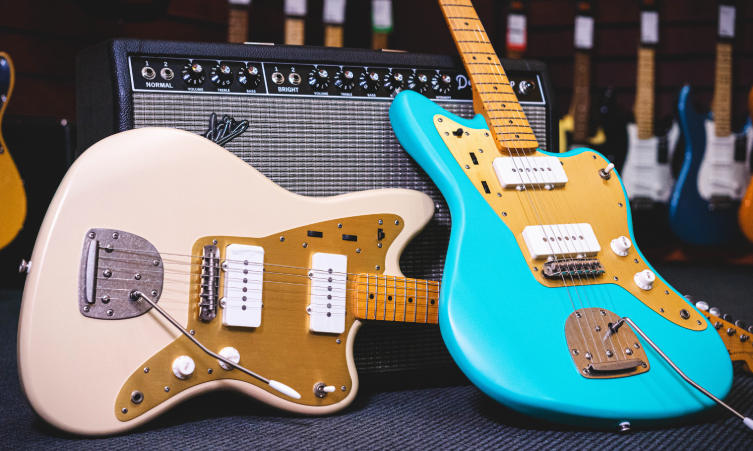
Squier, on the other hand, don’t have quite the same level of quality in their pickups. Don’t get us wrong: current Squier pickups are better than they have ever been, but it’s still a matter of approximating an example of a good pickup for a certain price point, and doing as good a job as can be done at that level. Squier pickups sound fine, for sure, but when you A/B a Squier Strat against a Fender one, the difference in sonic depth and richness is relatively obvious.
Again, pickups can be bought and retrofitted at any point, and plenty of people factor this in to their guitar spend, but off the bat, Fender guitars certainly have the edge.
4. Colours & Finishes
Paint colour is an area where Squier have actually been able to have more fun in recent years. Since the advent of Squier subranges such as the Classic Vibe and the Paranormal, we’re seen Squiers with some really quite lovely colours emerging, often with cool accessories such as anodized gold pickguards and block inlays. Since there’s less pressure to be historically accurate with such models, their designers seem to have been allowed freer reign to select choices that are bolder and more interesting for guitar fans.
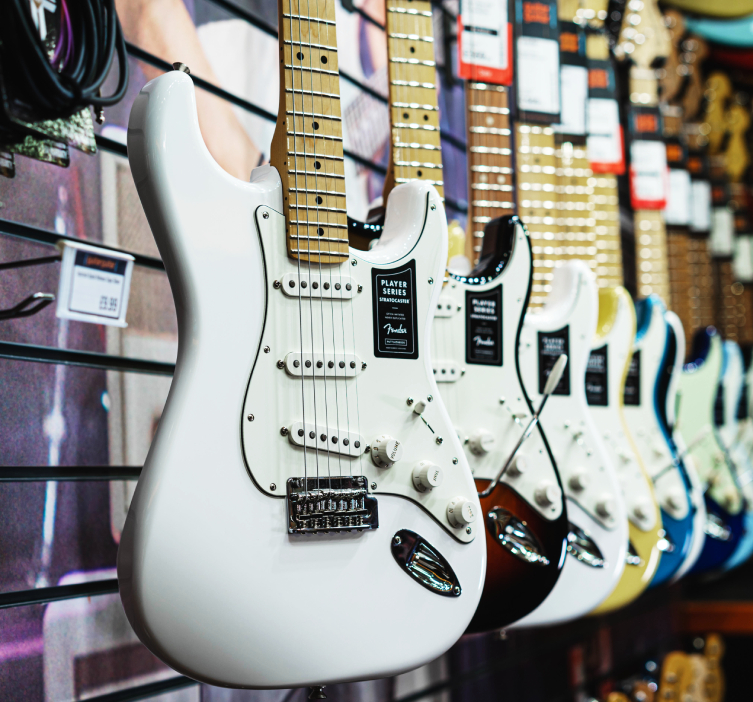
That’s not to say that Fender are boring, not at all! However, they do have certain grading systems in place for a lot of their ranges and models. Player Series guitars will come with a nice selection of traditional and modern colours, but if you want some of the cool retro DuPont colours of historic Fenders (Sonic Blue, Seafoam Green and the like), you have to spend more and travel up the range a bit to the Vintera series at least.
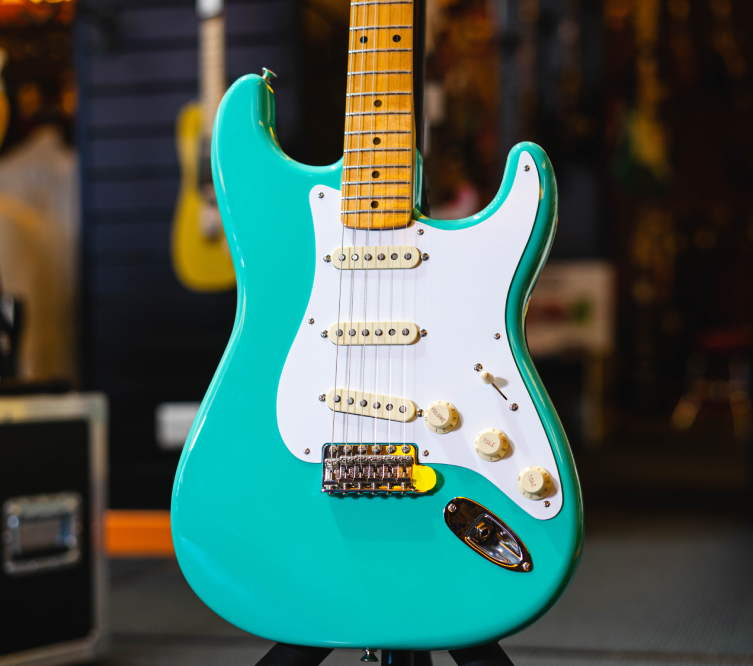
It’s slightly ‘gatekeeper’-ish, but it also makes its own sense: players who must have the Fender logo won’t be interested in the Squier equivalent, even if it’s in the exact shade of Surf Green that they covet. Those players will be happy to move to the Vintera range to get their Fender-branded guitar in their preferred colour. Those who just want a Surf Green guitar can choose from the Squier models if such an option is available.
One thing we have noticed is that Squier guitars often have a very thick polyurethane finish. That’s not bad in itself, and in fact for many players it’s a good thing: poly finishes retain their colour well and are very protective in terms of damage. The trouble for some guitarists is, they feel those thick finishes stop the wood underneath from resonating properly, and as a result, hamper the tone.
Fender guitars can also have thick poly coats, but there are ranges with other types of finish such as nitrocellulose, plus Fender’s polyurethane finishes are generally thinner to start with, particularly those made in the USA.
Different Ranges
Both Fender and Squier have numerous subranges of instruments, and these are generally exclusive to each brand. So, for example, Squier have a popular range called the Paranormal series, which we’ve mentioned before. It contains some alternative takes on classic designs, and has proven very popular. These are all exclusive to Squier, so you won’t find those exact models being sold by Fender.
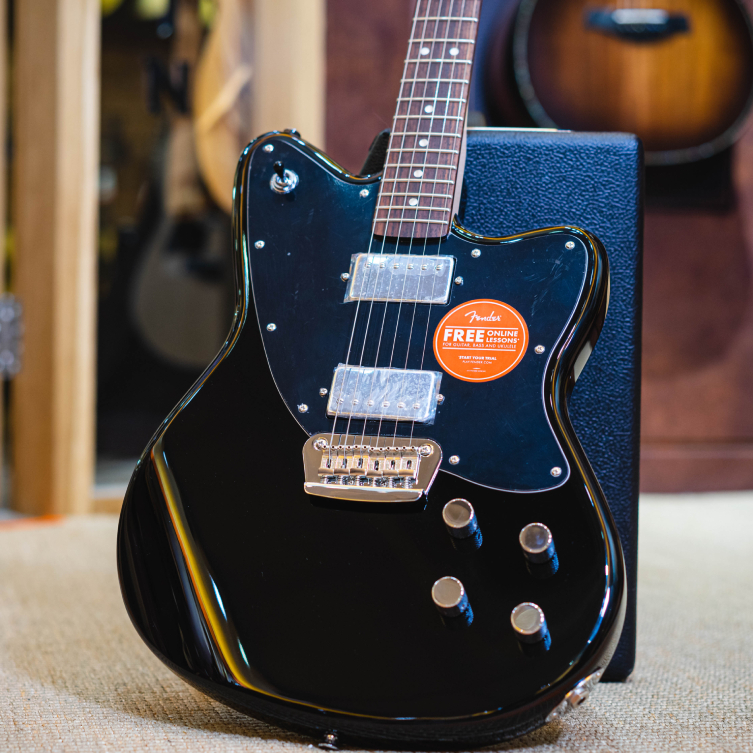
The same goes for the Fender Vintera range, which offers slightly tweaked takes on the classics in combinations that are not offered elsewhere. In these situations, comparisons are less useful - apart from the general things we’ve covered already - so the player’s own selective opinions become important. In other words, it’s kind of up to you how you feel about many of these ‘non-standard’ ranges since they are somewhat unique. They’ve often been designed with player-centric modifications in mind though, so they are worth checking out for sure! Each brand offers a bunch of interesting and cool variants on the famous models.

Are Fender Guitars Better Than Squier?
So, after all of that: is Fender better? Well, almost always yes, but it does depend on what you’re looking for, and what you’re willing to pay. Let’s make a pretty prime example right here. Say you want a vintage spec fifties style Telecaster with the Blonde finish, the black pickguard, the whole classic thing. You know the one! So, Squier offer a good value model like this; it’s the Squier Classic Vibe 50s Telecaster in Butterscotch. This guitar costs (at time of writing) £379 and has several authentic features like a pine body, 21 narrow tall frets and a lacquered neck. It looks the part and it has good alnico pickups (an upgrade from regular Squier pickups) for a better quality sound. This sounds like a good choice!

Moving up to Fender, the first appropriate model is the Player Telecaster in Butterscotch. At £679, it’s a good chunk dearer but still very competitive. This model isn’t designed to be retro, so you get 22 frets this time and they are medium jumbo, whilst the neck has a satin feel. It’s great and it has the ‘proper’ logo. This also sounds like a good choice!

Advancing into US models, the price shoots up to £1699 (as of writing, naturally) for a Fender American Pro II Telecaster, again in Butterscotch. This is another non-retro model designed to appeal to the biggest cross-section of players, but the specs actually speak to a guitar that is very up on its heritage: it’s a roasted pine body for one thing, which is a good start (traditionally, it was pine and ash for early Teles, and they used whatever of either they had to hand), and those frets are back to being Narrow Tall in size. There may be 22 of them, which is not a 1950s thing at all, but we’re still impressed! A deep C neck is also heading the right way, and brass bridge saddles add more fifties flavour. V-Mod pickups are not necessarily vintage voiced but they are excellent, so they get a pass here! Another good choice! See where we’re going with this?

Our final guitar to cross-reference is the Fender American Vintage II 1951 Telecaster in Butterscotch. Don’t be confused by the ‘51 age instead of the usual ‘52: Fender didn’t exactly reinvent the tele over this brief year’s period of time, and it feels more like a marketing decision to us than an integral change in any fundamentals. This guitar has an Ash body, which is finished with nitrocellulose. It has a thick U-shaped neck, which is the closest of all four of our examples to an actual fifties Tele, and it also uses a more curved 7.25” measurement for the fingerboard, which again is very authentic. Specifically wound pickups give you that proper 50s twang and there are brass saddles here too, to further accentuate the famous tele top end. Hey, this seems like a very good choice too!

So, looking at all four of these, you’ll see that the specifications vary pretty wildly from model to model. None of them are completely, entirely the same as a vintage fifties Telecaster, though they are all actually pretty close in different ways. The real point is: there is a price difference of £1680 between the cheapest and the dearest guitars here. You can bet the American Vintage II Tele is the best for vintage authenticity, and it’s one helluva guitar, but is that the best one for you? That’s not something we can say for certain, but those indeed are the main differences between the Squier guitar and the various Fenders. If you have the money and you want the best, go for the best. It will be the best. If you haven’t the money, you still have alternatives, and you’ll be missing out less than you expect.
Something For Everyone
After looking at all of these factors, the thing that seems most obvious to us is that, regardless of your spending means, you’ll be able to get a very good instrument that looks, feels and sounds the part, without having to sacrifice too much at all! You may not get exactly the combination of features you want with the logo you prefer at a price you want, but you’ll get really close, and we think that’s a pretty excellent position to be in!
Fender and Squier are fairly distinct brands, and should probably always remain that way, but the culture around Squier has changed just as the offerings from Fender have broadened. Quality across each price point is better than ever, so whether you opt for a Squier or a Fender guitar, your hard-earned coin will buy you an instrument that will serve you well and that you can be proud of.




